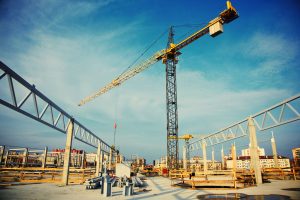 What happens now to the many infrastructure projects Carillion was involved with? Simon Lewis, partner in the construction and engineering team at Womble Bond Dickinson, assesses the implications of Carillion’s insolvency and outlines what steps those working with Carillion should take next.
What happens now to the many infrastructure projects Carillion was involved with? Simon Lewis, partner in the construction and engineering team at Womble Bond Dickinson, assesses the implications of Carillion’s insolvency and outlines what steps those working with Carillion should take next.
First published on LexisPSL Construction. Click here for a free trial.
What steps should sub-contractors/suppliers to Carillion be taking in light of its insolvency?
The Official Receiver (OR) has indicated that his priority is:
to ensure the continuity of public services while securing the best outcome for creditors. Unless told otherwise, all employees, agents and subcontractors are being asked to continue to work as normal and they will be paid for the work they do during the liquidations.
So, on the face of this advice, it remains ‘business as usual’ for those working with Carillion in the public sector.
However, approximately 60% of Carillion’s business is made up of contracts with the private sector, and on Monday, 15 January 2018 the government indicated that either the private sector counter-party must within 48 hours agree to fund future works itself, or those private sector contracts of Carillion would be terminated.
Against all this uncertainty, there are some immediate legal and practical issues that should be considered by all supply chain members:
- consider whether you need to terminate your contract—some contracts may already be deemed to have terminated due to the OR being appointed as liquidator while others are likely to contain strict notification requirements
- continue to comply with your own payment obligations to others—make sure you understand how this may impact your own obligations to make payments to others and ensure that all notices continue to be issued correctly and on time
- take reasonable lawful steps to secure your site resource or any plant or materials, whether fixed or unfixed, for which you have not been paid, and consider whether you could make use of any retention of title terms in your contract
- ensure that you keep good physical records showing the status of the works you have completed to date on behalf of Carillion, and
- if the loss of any existing contracts with Carillion is likely to cause financial difficulties for your own business in the future, seek early advice
What steps should Carillion’s clients be taking?
Many of the matters listed above will also apply. In addition, employers and developers should consider:
- how will any long-term services and facilities management obligations be fulfilled in future
- how you might directly engage any of Carillion’s sub-contractors to ensure continuity of works or services (or ensure that sub-contractors are novated to any new contractor)
- if there is a public or private finance initiative element to your project, consider the impact of public procurement rules when seeking to re-procure works
- how this impacts on your funding arrangements
and ensure insurance is in place for the project and existing obligations under the contract have been complied with.
If any project security documentation is outstanding:
- check any advance payment bonds, performance bonds, vesting certificates and any other security documentation and understand the consequences of this insolvency
- conduct an audit recording the status of the works and all on-site plant, equipment and materials and ensure security measures are in place
- ascertain copyright and design rights and obtain drawing and design information as far as possible from Carillion, its consultants and subcontractors, and
- verify the amounts paid and the status of the account in terms of any overpayments, right to set-off and retentions
What are the implications for infrastructure projects on which Carillion is working?
Many of the large infrastructure projects (including High Speed 2 (HS2)) do not hold direct contracts with Carillion and were awarded to joint ventures (JVs) consisting of a number of large contractors. Any adverse impact should therefore be containable. The remaining CEK JV partners on HS2 (Eiffage and Kier) will now take over and complete Carillion’s works.
Carillion was also involved in a number of other JV infrastructure projects. These will also continue, although the cost to the other partners or contractors is likely to be significant. For instance, Balfour Beatty, which was in a JV with Carillion on three highways projects in England and Scotland, now expects to take a £45m hit in 2018.
There may be other infrastructure projects such as elements of the Crossrail project where (solely) Carillion was engaged, and there the considerations highlighted above will apply.
How does the government safeguard against events such as this?
A greater degree of financial due diligence and transparency in terms of the financial stability of companies would help to safeguard against collapses such as this in the future, but that would require significant reform of reporting obligations and company structures. Whether that will be forthcoming remains to be seen.
Are there any other important aspects worth mentioning?
HMRC has indicated that it will provide practical advice and guidance to those affected through its Business Payment Support Service (BPSS) and that ‘time to pay’ tax arrangements may be available to those affected by this collapse.
In addition, a number of banks are currently working with the government and trade body, UK Finance to provide financial assistance to small and medium-sized enterprises (by way of overdraft extensions, payment holidays and fee waivers) through what will inevitably be a difficult period.
We anticipate that further important announcements will be made by the OR and his special managers over the coming days and weeks.
Interviewed by Jenny Rayner. The views expressed by our Legal Analysis interviewees are not necessarily those of the proprietor.
Source: LexisNexis Purpose Built
Carillion’s insolvency—infrastructure and construction


